“When I was a small boy, a woods companion of my father’s used to describe all choice camps, fishing waters, and woods as “nearly as good as the Flambeau.”
The Memories
Tom, my longtime paddling partner and uncle, offering some pre-river scouting and safety tips before our recent run down the Flambeau River. Photo courtesy of Traveling Ted
I vividly remember the day my dad decided I was old enough to join him and my uncle, Tom, on their annual Memorial Day weekend canoe camping trip on the Flambeau River. I was jumping out of my skin with excitement! In my opinion, that decision was long overdue. I mean, come on, I was 10-years-old. I should've been a seasoned veteran by that point in my life! Sure, we had paddled striking, twisting bluff country rivers, such as the Wisconsin River, Upper Iowa, Kickapoo, and traveled the beautiful Namekagon-St. Croix National Scenic Waterway, but after hearing my dad and uncle tell wild stories of the Flambeau River rapids and wilderness, I was champing at the bit to paddle it myself!
The Flambeau did not disappoint. Paddling and camping the Flambeau was a trip into the unbroken dense forest of the northwoods! The rushing rapids had me feeling like I'd truly arrived in the land of sky blue waters. I learned new wilderness skills and concepts on my early Flambeau trips, from reading the river and watching for Vs, wave trains, and holes, to performing eddy turns. I remember paddling furiously in the bow of uncle Tom's canoe as he guided us upstream to surf on a huge wave. Plus, there were bears! Each night, a prowling bear sauntered through camp looking for food and had to be spooked off by clanging pots and pans. No harm, but it certainly gave me some sensational stories to tell back at school!
The River
The Flambeau River flows 150 miles through northern Wisconsin, and due to it's protected status, length, seclusion, and paddle-in campsites, it is regarded as one of the premiere canoe camping experiences in the Great Lakes region, if not the country. It offers paddling options for all skill levels, including sections of easy paddling, raging white water, and even a large Boundary Waters-type experience on the Turtle-Flambeau Scenic Waters Area (a large flowage near the Flambeau's headwaters). The South Fork contains expert level, playboat-type whitewater, while the North Fork offers a canoe tripping experience with intermediate level whitewater. The river is noted for excellent fishing with musky along the river and walleye in the Flowage. There is very little development along the river, giving paddlers mile after mile of northern hardwood forest.
Like many of our great rivers, the Flambeau has a rich history. Originally used as a waterway for native travel, fur trading, and log driving, it's said that the Flambeau's history gave way to its name. Early French explorers christened the river the Flambeau when they witnessed natives using torches to light their way while spearing fish in the river.
The Return
Wenonah canoes ready to tackle the Flambeau River.
I wanted to make a return trip to the Flambeau for decades, so this Summer I organized a trip with a great crew of friends, old and new and all with varying levels of paddling experience. A good friend, Kurt, who is a rep for Wenonah Canoe and fellow Registered Maine Guide, not only joined in the trip, but also trailered a full collection of new Wenonah boats (both flat water and downriver designs) to test on the Flambeau! Katja, Kurt's girlfriend, a nature enthusiast, and incredible cook and artist (check out her cool trip mural at the end of this post!), made the trip, along with their good friends and world travelers, Aaron and Helen. Griff, one of my long-time friends and campfire companions, Paramedic, and SWAT team member, was also in the crew. My uncle, Tom, who I'd paddled with on my first trip down the Flambeau all those years ago, and who is one of my regular paddling partners still to this day, joined us for the trip. Wilke, an eager and enthusiastic outdoorsman and BMP trip regular, jumped at the chance to paddle the Flambeau. Rounding out the crew lineup was Traveling Ted. I've followed Traveling Ted's blog for quite a while and have enjoyed catching up with him at Canoecopia. This was our chance to finally get on the water together. Ted and Wilke lead us over Beaver Dam Rapids with great gusto! It's going to be fun having both of them join us on the Allagash River in northern Maine this Fall!
Setting Up Camp
During this trip, we set up our base camp in the Flambeau River State Forest, at the Lake of the Pines Campground. We nearly had the place to ourselves. You have the option of paddle-in campsites, which allow for an extended on-the-river canoe camping experience, but we had crew members coming and going at different times, so we needed to run a base camp operation. One important point to note about the paddle-in campsites is that you're not able to reserve them. Even though we only saw two or three other paddlers on the river, many of the paddle-in sites that we passed were full. If you're counting on using those sites, plan to stake your claim early!
Relaxing Paddling
After setting up camp Friday night, we paddled from Hwy W (St. Forest HQ) to Camp 41 Landing on the north branch of the Flambeau. This stretch offered a perfect start to the trip. After the usual weeklong hustle and bustle, packing, and three-hour drive from the Twin Cities, it was great to unwind while peacefully floating along. I loved the sensation of going from the sounds of the urban environment and constant digital pings, to gentle wind rustling in the trees, birds chirping, and water flowing. We saw several bald eagles that night, as well as deer and a bear on the shuttle route. Kurt and Katja heard elk bulging near the take-out. No moose on the Flambeau, but elk have been reintroduced in the forest!
The Flambeau River State Forest is huge. At 90,000 acres, it's the second largest in Wisconsin. While floating the river and studying the thick, diverse forest on the banks, Leopold's quote was in my mind. As we paddled along, Tom pointed out unique species such as walnut, and I found myself repeatedly admiring the many massive pines along the riverbank. This stretch took us about an hour and a half and included one easy set of Class I rapids (Porcupine Rapids).
River Prep
On Saturday, we paddled from Camp 41 Landing to Beaver Dam Road on the North Fork of the Flambeau.
“Considered by paddlers to be the best whitewater stretch on the Flambeau...When canoeists tell stories about whitewater paddling on the Flambeau, this is probably the section they’re likely talking about.”
Ready for some challenging river paddling, we started the day with a scouting and safety talk covering:
The route
Reading the river
Self-rescue: how to swim the rapids if you flip
Signals: hands, paddle, whistle
Group management: spacing, scouting before running, lead and sweep boats
Once on the river, we began where we'd left off the previous night and warmed-up with some basic river paddling maneuvers:
Forward and back paddle
Draw and cross-draw
Sideslips and setting into eddies
Ferrying forward and back
Eddy turns and peelouts
We encountered fierce headwinds Saturday morning, but by mid-afternoon, the winds had died down a bit and we were getting into fantastic paddling action! This stretch took us through:
Wannigan Rapids (I-II)
Flambeau Falls (I-II)
Four pitches of Cedar Rapids (I-II)
Beaver Dam Rapids (a solid II+)
I don't think I've ever had to paddle as hard against the wind while on a river with a strong current, but even with the unrelenting wind, we still finished this stretch in about seven hours. I also slowed us down a bit when I went overboard and took a refreshing swim in Cedar Rapids. Yep...
Swimming the Flambeau
This trip was my bowman's first time in whitewater, and he'd paddled well all day. When we ran Cedar Rapids, though, our bow plunged over a ledge, got hit with a side current, he got a lapful of water and instinctively went for the dreaded "gunnel grab" when we really needed his paddle in the water. I powered forward, but perhaps I should have braced or tried a "righting pry." In either case, it was water under the bridge—and gallons and gallons of water over the side of our canoe. In a split second, we were swimming the root beer-colored rapids of the mighty Flambeau. As soon as we hit the water, our training kicked in, and we:
Got on our backs with our feet pointed downstream
Did not try to stand up (and risk foot entrapment) until we were well away from the strong current and rocky bottom
Made sure we weren't in any way entangled in the canoe or gear
Let the canoe get ahead of us in the river, so there was no chance of the current trapping us between the canoe and a rock and crushing us
We flushed through the second drop in Cedar Rapids, were pushed along by the current around the island, and eventually (and safely!) grabbed a rock in the calmer water below the rapids.
Camp Life
This trip was primarily about time on the river and teaching and practicing paddling skills, but we did have time for some fun in camp.
We ate well, relishing the requisite Wisconsin brats and beers around the fire. The brats were sourced by Aaron and Helen from a butcher shop in Madison. Katja made an incredible Dutch oven chicken enchilada casserole (that's "hot dish" to everyone back across the state line in Minnesota) that was a contender for some of the best Dutch oven cooking I've ever tasted.
We also made time to practice some camp and bushcraft skills that can be extremely useful for any canoe camper:
Rope work:
We quickly snugged up a tarp in the face of approaching rain using a timber hitch on the fixed end and a trucker's hitch on the other to crank the ridgeline tight. Slippery taut-line hitches at the stake out points ensured that we'd be able to adjust the tension and the whole set up would come down with a few quick tugs on the slippery hitch ends.
Our cooler lid stayed securely locked down while going through the spin cycle in Cedar Rapids as I'd tied it shut using a bowline for a "parbuckle" (check out our bowline tutorial).
Axemanship: While splitting some kindling out of the big chunks of campground wood, I gave a quick version of my axe handling demo. I'm more convinced than ever that in most cases, the safest method for splitting wood is to use a chunk of wood resting on its side on another horizontal log in a "T" formation, rather than the traditional method with someone splitting while standing. Using the T formation, the desired contact point is much closer to the ground, making it safer for the edge of the axe and your toes.
Bow drill fire by friction: Kurt had teased me about my "Boy Scout fire tricks," so I pulled out my bow drill set and, after a quick explanation, I had a nice column of smoke rolling off my fire board. By this time it was pitch black, mosquitos had begun feasting on everyone, and the crew was ready to get those brats on the fire, so we quickly moved on to...
Platform and brace fire lay: Sorry teepee fire fans, the platform and brace is the most widely applicable, sure-fire fire lay. Just lay down a raft of sticks (the "platform") to raise the fire bed off the cold, damp ground and allow the fire to draw air from underneath. Place a thick stick (the "brace") perpendicular to the other sticks across the top of the platform. Light tinder and place it on the platform next to the brace. Lay your fine kindling at an angle, lean-to style with one end propped up on the brace and the other end resting on the platform. As a strong flame emerges, build with additional layers of kindling and finally thicker fuel. This technique allows for plenty of airflow and prevents you from squishing your tinder and smothering the emerging fire.
The Storm
Watching the weather forecast leading up to the trip, we expected a hot and humid weekend with temperatures in the 90s and rain Saturday afternoon. Thankfully, it wasn't quite that hot and the rain held off on Saturday, but we did have wind—serious wind! Even though we were paddling downstream with a strong current, we really had to dig in due to one of the strongest upriver winds I've ever faced!
When we got off the river and checked the weather Saturday night, things looked stormy for Sunday. We were planning to paddle a shorter stretch of the Flambeau River's South Fork on Sunday (one with moderate whitewater), but in light of the forecast, we opted to test some of the fast Wenonah flat water boats on the lakes near camp—we didn't want to be stuck on the river in the storm.
Choosing to stay off the river turned out to be a good call. Just as we finished breakfast, the treetops started swaying with the approaching storm. We quickly packed up camp, and the wind and rain moved in just as quickly. As we headed for home, we hadn't even made it out of the State Forest campground before seeing two downed trees, and we passed dozens more as we headed west along Wisconsin Hwy 70. In the town of Stone Lake, we saw about a dozen mature trees blown over and lying on their sides, completely uprooted. While we all wanted more time on the water, those uprooted trees solidified our call to stay off the river. Had we continued paddling, our only exit option would have been down river when we finished our route, which very well would have been a dangerous scenario.
The Verdict
The Flambeau River once again proved to be a fantastic destination for camping and paddling! Friday night offered solitude and serenity—a great way to unwind from the week and ease into a wilderness mindset. Saturday was challenging winds and fast rapids. Sunday was downright frightening with the intense wind, rain, and storm damage all around us.
For me, this trip was especially fun with my uncle Tom along since he helped lead my first paddle down the Flambeau.
Wenonah's T-Formex
On my early Flambeau trips there was a lot of teeth-grating as the hulls of our aluminum canoes grabbed rocks and dented on serious impacts. Not so on this run.
Bull Moose Patrol was turned loose to test a trailer full of new Wenonah canoes! There'll be more to come in this area, but one important development to note, the use of T-Formex in canoe hulls. The branch of the canoeing community that wants tough, durable, and reasonably light canoes that can be molded into good hull designs has been at a loss since Royalex, the preferred material for decades, was discontinued a few year ago. After a weekend paddling Wenonah's new T-Formex canoes, I think Royalex fans will be excited with this new option. The T-Formex is essentially the same weight as Royalex and very tough. T-Formex is a bit stiffer than Royalex, which means it may not slither over obstacles as easily as Royalex hulls, but the bonus is that I didn't notice the T-Formex "oil canning," (power-robbing floppiness in some Royalex canoe hulls), and it can be molded into efficient hull designs. In terms of impact resistance, T-Formex appears to be plenty tough, and Wenonah assures us that it can trade blow for blow with Royalex.
I keep thinking about the long Flambeau River trip and paddling the entire 150 miles through Wisconsin's northwoods. I guess it's not too soon to get our next Flambeau River trip on the calendar!
If you're interested in joining Bull Moose Patrol on a wilderness trip or outdoor skills class, please get in touch with us at GetOutdoors@BullMoosePatrol.com.
Illustration by Katja Schindler
Resources and Helpful Info
To learn more about the Flambeau River, check out these resources:
Paddling Northern Wisconsin by Mike Svob has great detail on the Flambeau River
Morral River Films created a great video clip about the Flambeau
If you have any questions about our trip down the Flambeau, we'd be happy to chat with you! Just send us an email at GetOutdoors@BullMoosePatrol.com.

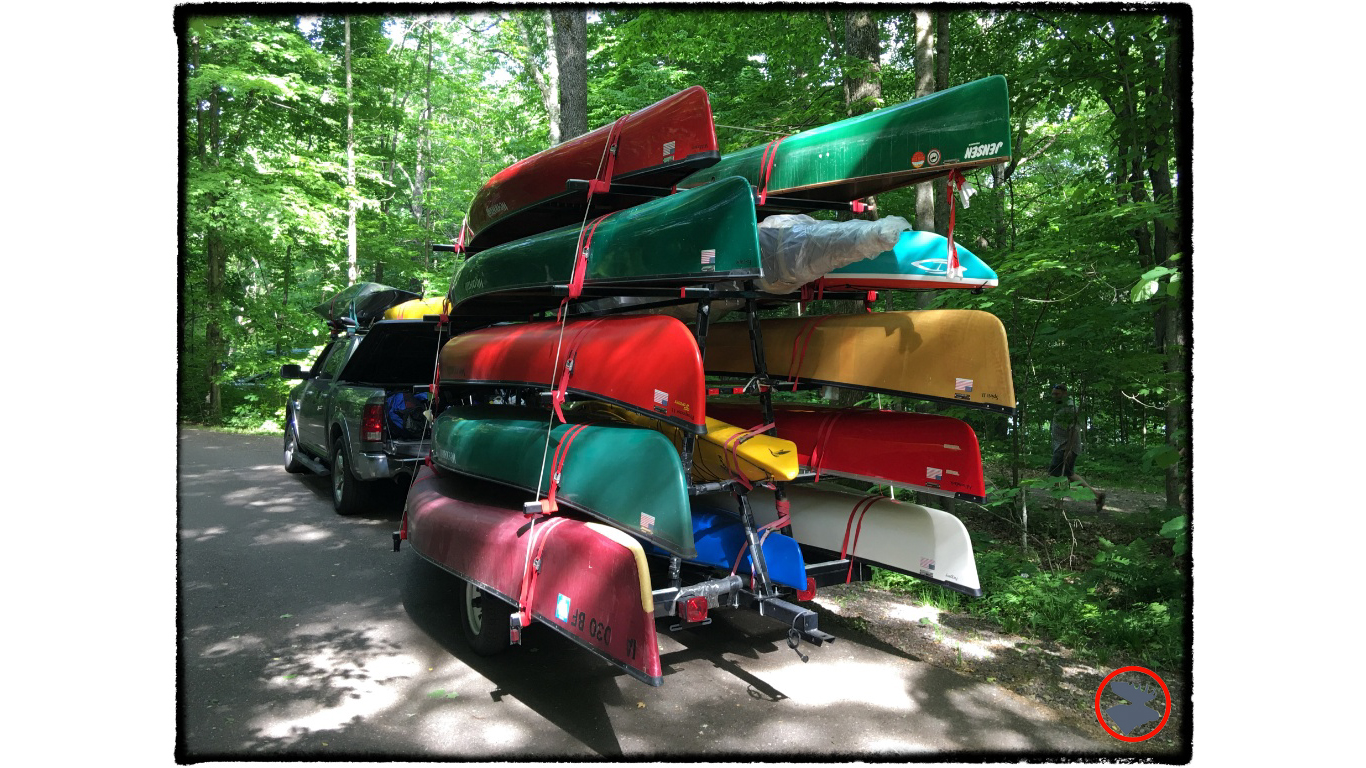

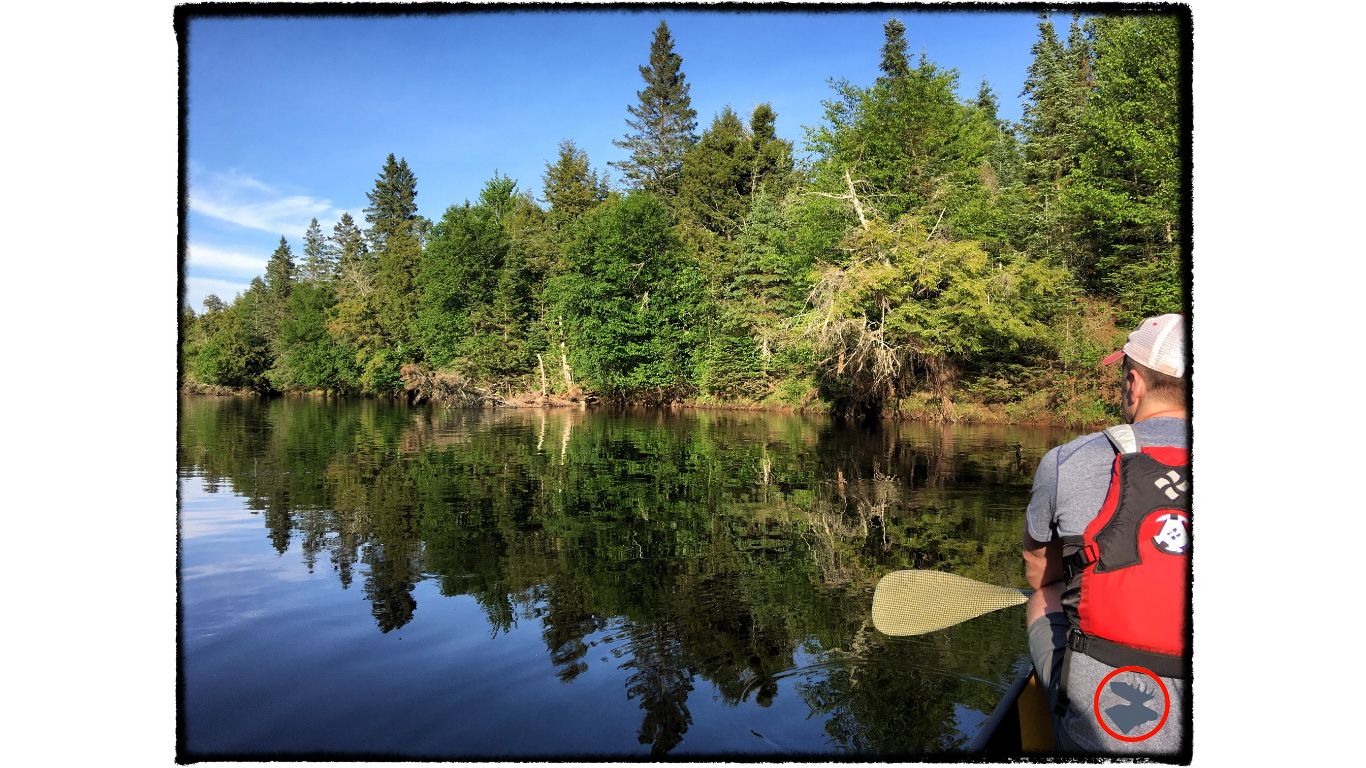
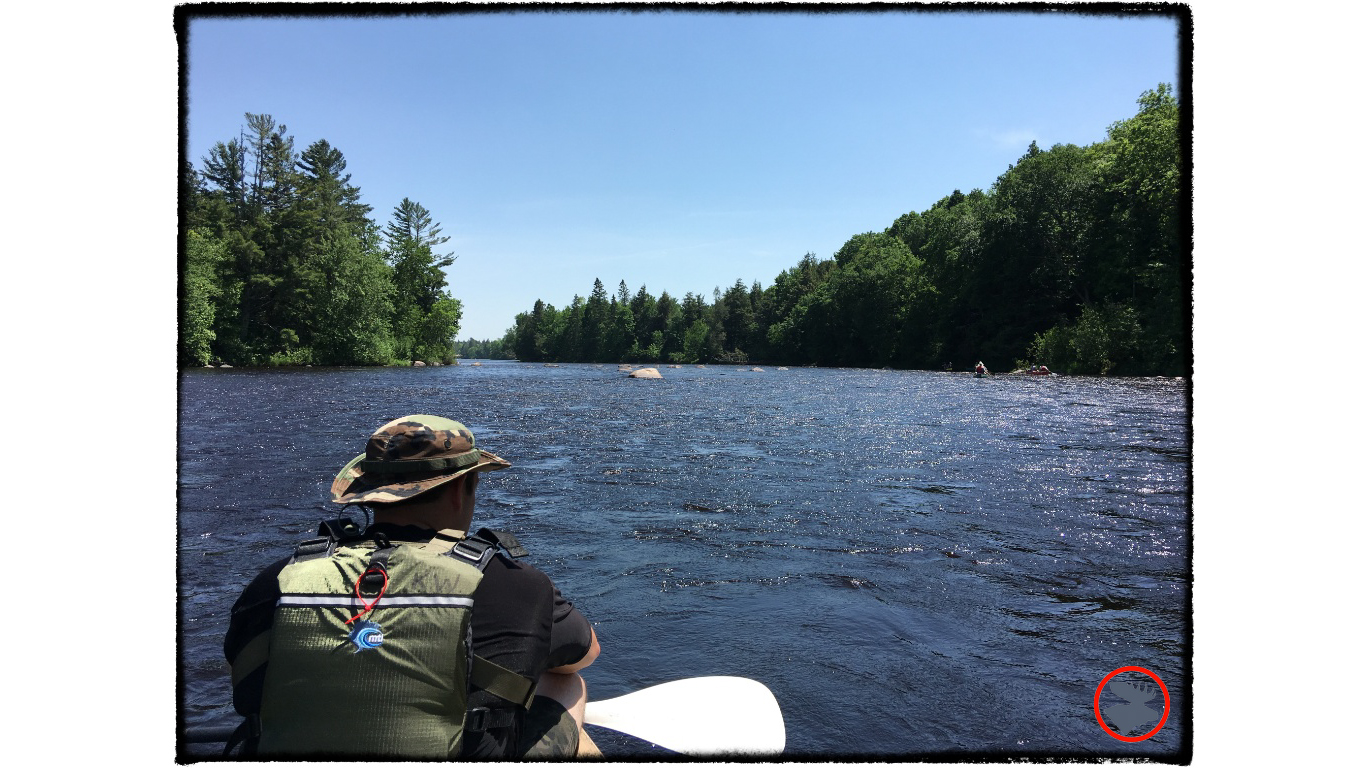

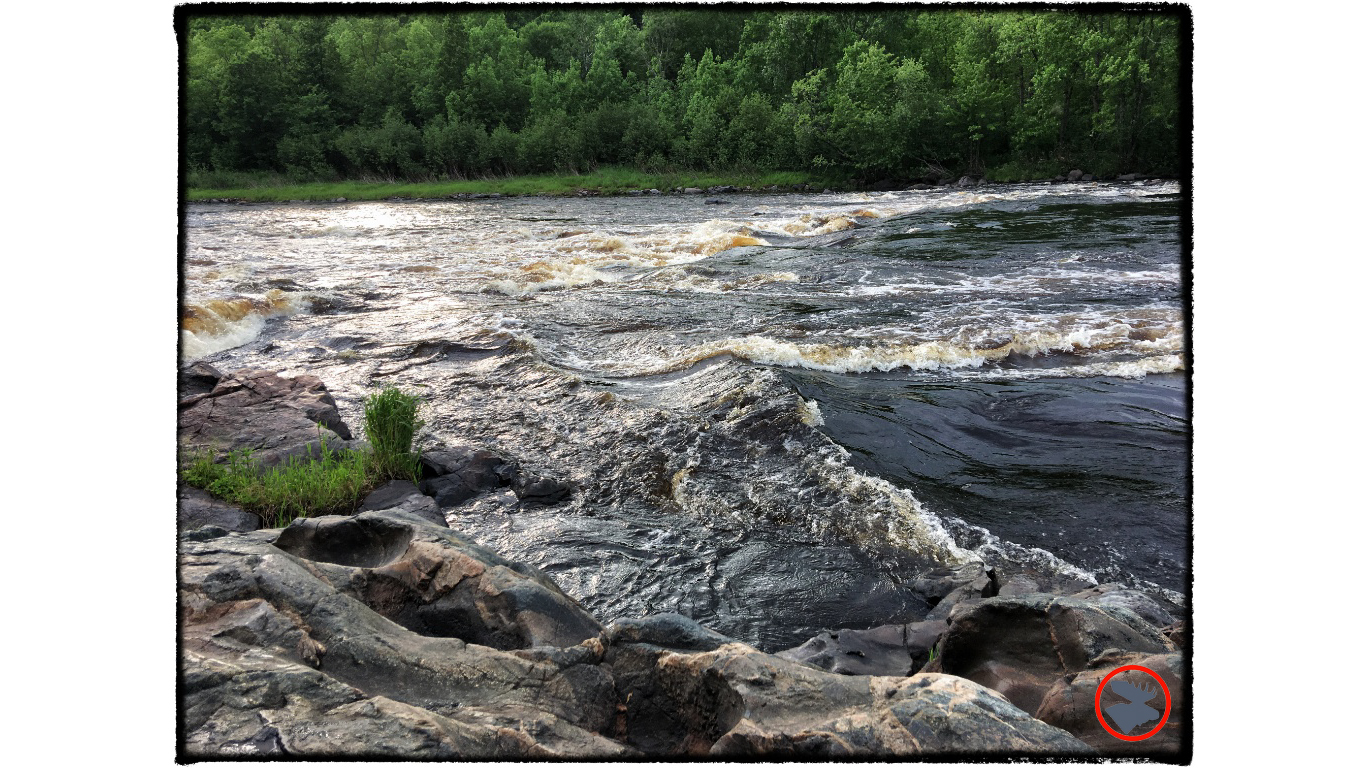
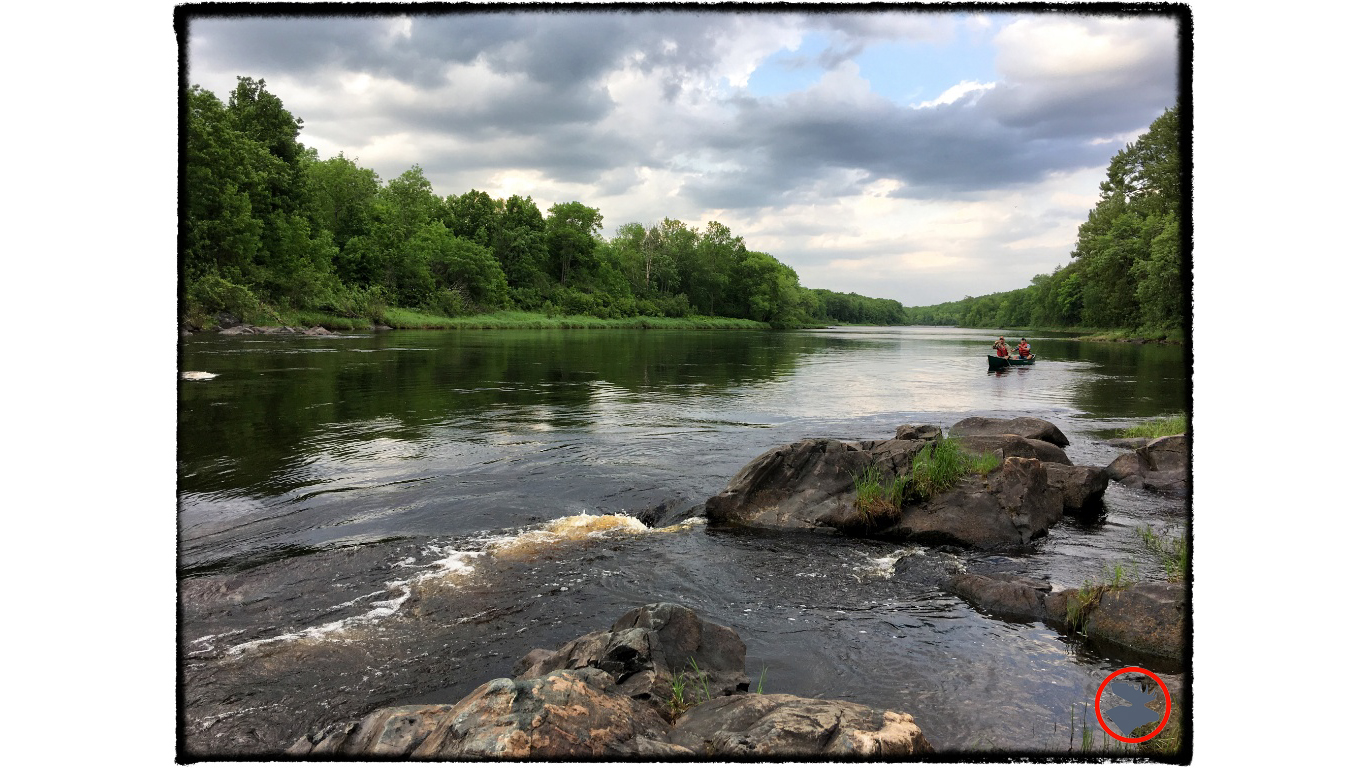
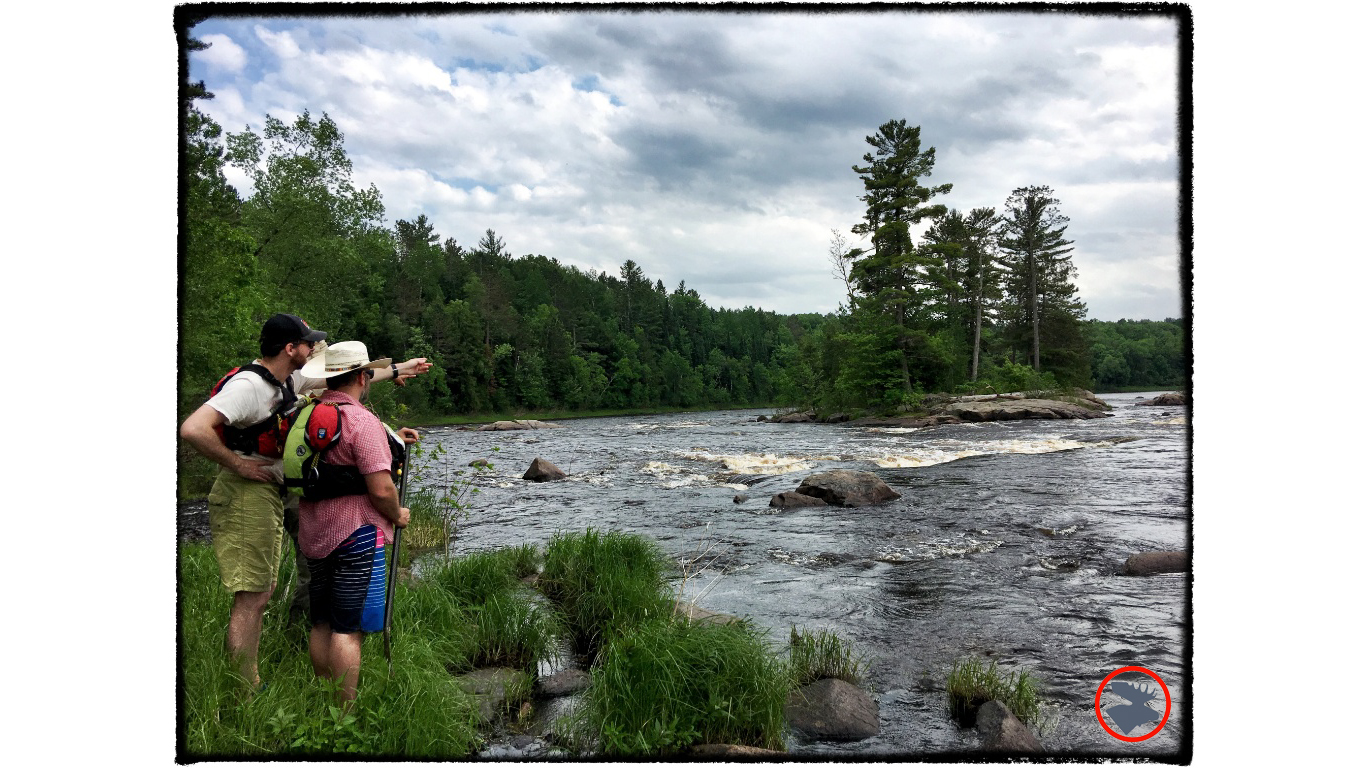
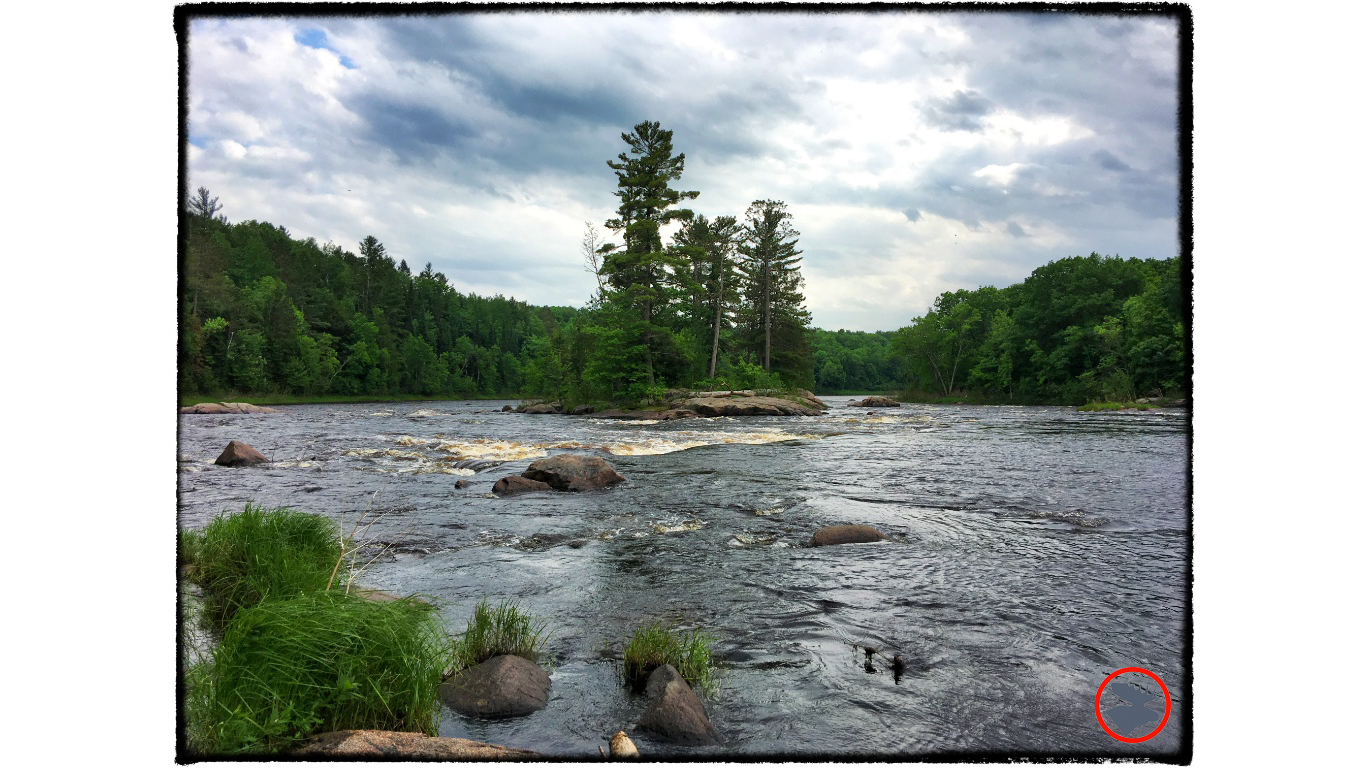

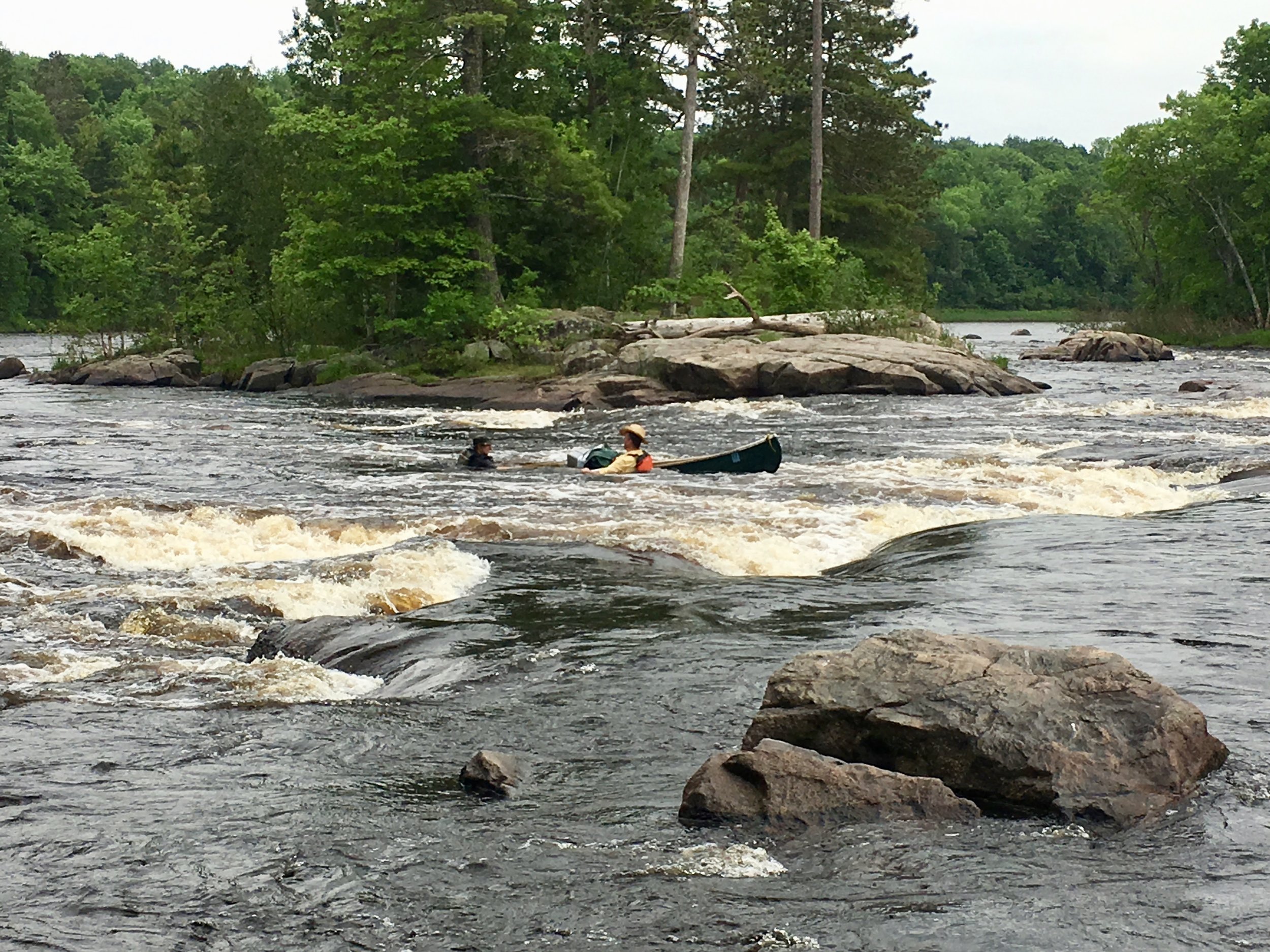
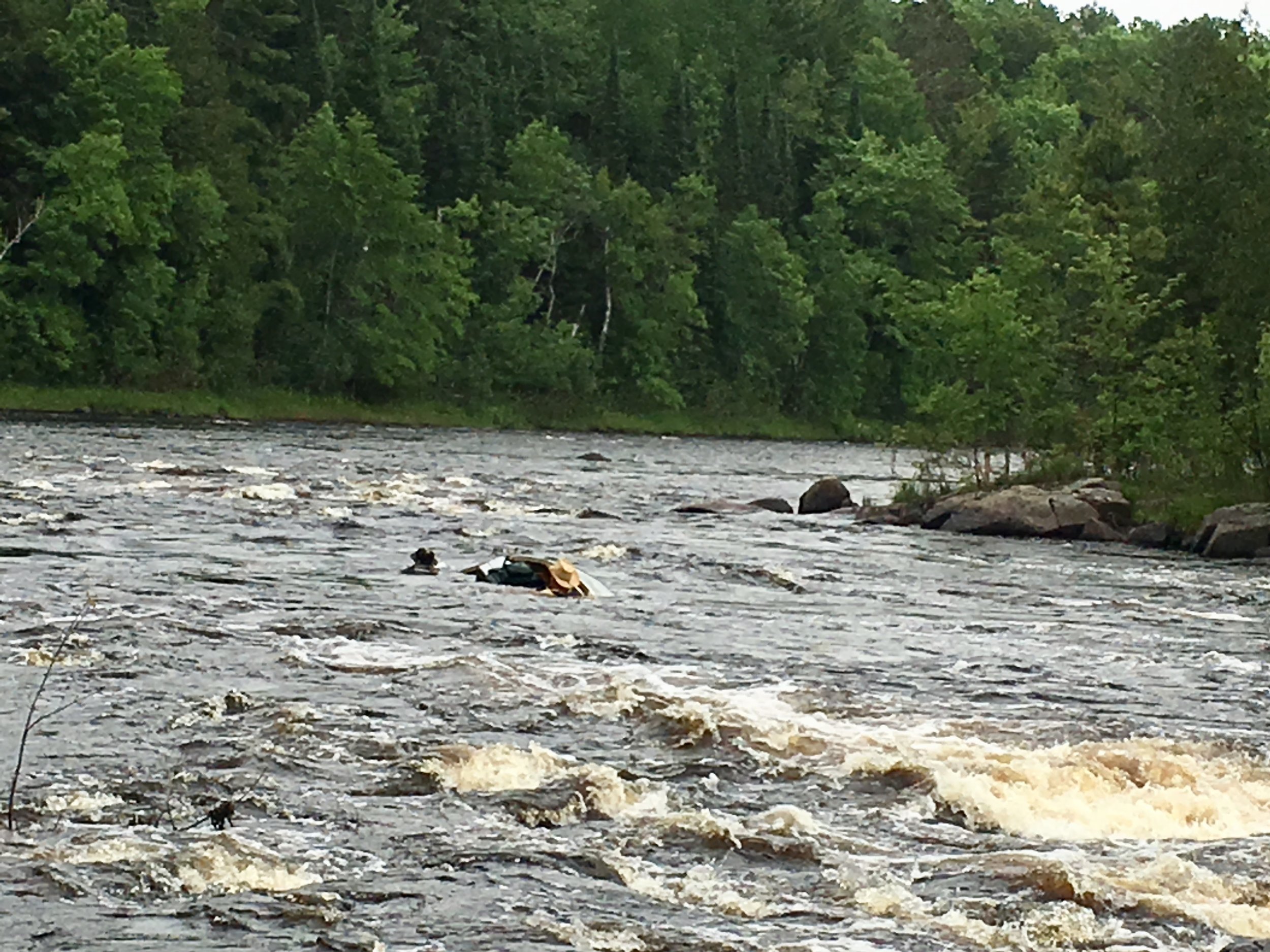



Our peaceful paddle on the remote and wild Big Fork River in northern Minnesota was filled with the perfect amount of whitewater and wild landscape! It will inspire any paddler to lock in this river for their next paddle destination.